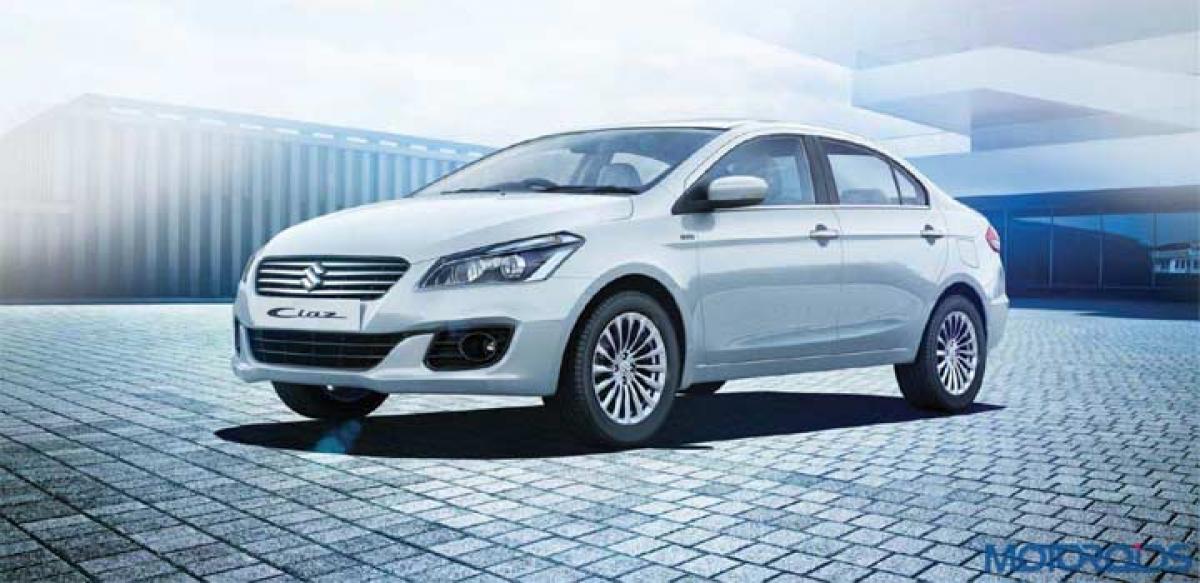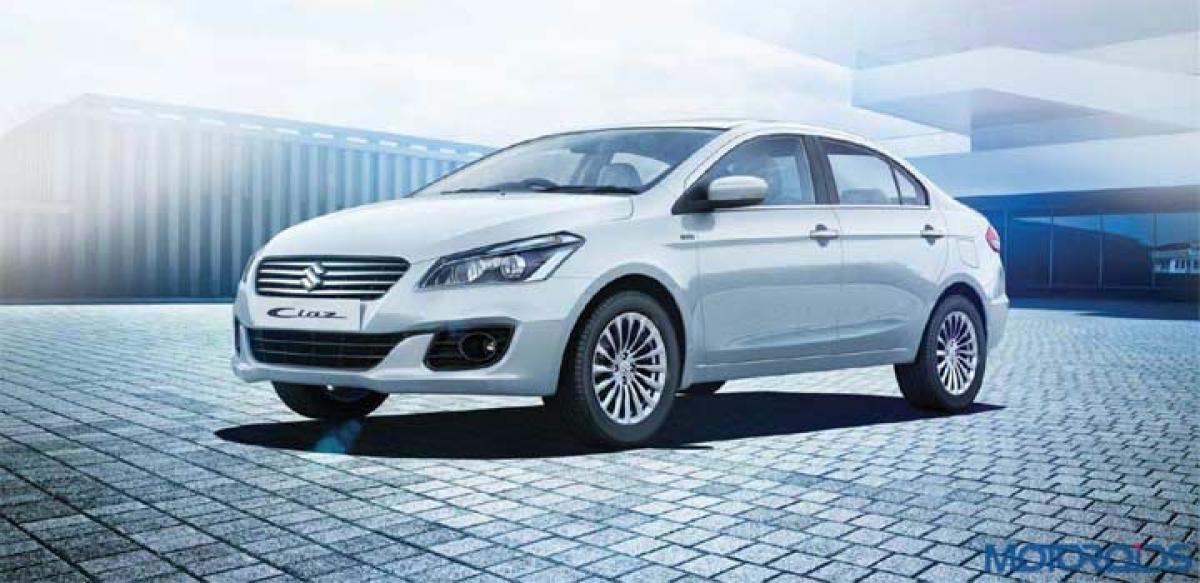Live
- Workshop conducted on Mathematics
- Revanth visits SLBC tunnel collapse site
- BJP has no discipline within party
- Hyd Muslims erupt in joy to welcome month of Ramzan
- Blue Ghost Touches Down! US firm Firefly makes its first moon landing
- MIMS hosts seminar on new developments in anesthesia
- Shankaracharya sees spiritual renaissance among India’s youth
- CM hits out at Kishan for delay in TG projects
- Accelerate project works: Subbarao
- Rushikonda Beach stripped of its Blue Flag certification temporarily
Just In

Tryst with hybrids. The history of hybrid cars stretches back over a century. The first hybrid car was built in the year 1899 by engineer Ferdinand Porsche. Known as the System Lohner-Porsche Mixte, it used a petrol engine to supply power to an electric motor that drove the car\'s front wheels. The Mixte was well-received, and over 300 were produced.
hot wheels
Hybrids seem like an overnight sensation, but the history of hybrid cars actually goes back to the eve of the 20th Century. The journey was long and the nights were dark, but then as the dawn breaks, we have a glimpse of how the future is going to be
Better late than never, Hybrid technology arrived in Formula One, where the pursuit of greater fuel efficiency kicked the old V8s into touch and replaced them with complex downsized V6 turbocharged petrol-electric powertrains. They sounded odd, to begin with at least, prompting F1's incorrigible kingpin Bernie Ecclestone to rubbish his own sport.

But then, the cars used 30 per cent less fuel, the racing was often grippingly gladiatorial, and by the end of the season the cars were going faster than ever. In fact, Mercedes driver Nico Rosberg even set a new lap record, during qualifying for the Brazilian Grand Prix. Eventually, the world figured out, this is how it’s going to be, ready to embrace the delightful change.
When it all began:
The history of hybrid cars stretches back over a century. The first hybrid car was built in the year 1899 by engineer Ferdinand Porsche. Known as the System Lohner-Porsche Mixte, it used a petrol engine to supply power to an electric motor that drove the car's front wheels. The Mixte was well-received, and over 300 were produced.
The demand for hybrids began to wane, however, when Henry Ford started the first automobile assembly line in 1904. Ford's ability to produce petrol-powered cars and offer them at low prices dramatically shrunk the hybrid vehicle market. While hybrids were produced well into the 1910s using the Mixte's technology, most sold poorly because they had higher prices and less power than their petrol counterparts.
Hybrids soon became a thing of the past, beginning a nearly 50-year period where they were merely an afterthought. It was in the 1960s, the United States congress introduced legislation that encouraged greater use of electric vehicles in an attempt to reduce air pollution. While the government tried to garner support for hybrids, renewed public interest didn't gain momentum until the Arab oil embargo of 1973.
The oil crisis caused the price of petrol to soar while supply fell dramatically. Over the next 25 years, auto manufacturers spent billions of dollars on research and development of hybrid technologies. In spite of this, very few vehicles were produced that could both reduce the world's dependence on oil and compete with petrol vehicles on price and performance.
It was the late 1990s, a handful of all-electric vehicles were introduced, the GM EV1 and Toyota RAV-4 EV being two examples. These all-electric vehicles failed to attract widespread interest, and were soon dropped from production. It wasn't until Toyota released the Prius in Japan in 1997 that a viable alternative to gas powered vehicles was introduced.
Prius gave hybrid technology the foothold it was looking for. In the years, the Prius became synonymous with the term "hybrid." It is the most popular hybrid car ever produced, and auto manufacturers around the world have used its technology as a basis for countless other vehicles including the BMW, Mclaren and even Ferrari.
Indian scenario:
Much to the anticipation, the idea had to strike the right chords in the country obsessed with ‘Kitna Deti Hai’ feeling in stitched in the temporal bones of every citizen. But sadly, it didn’t.
The Indian car buyers were not willing to shell out a 25-30 per cent premium to own a petrol-plus-electric drive sedan, even if it yielded a 45 kilometres per litre mileage.
Even Honda’s Civic hybrid did not soar well, with (nationally) units selling as much as your fingers can count. Decades later, the key automaker of the country, Maruti Suzuki made a promise, a hybrid powered car in the price range of below 10 lakh. The fulfilment of the promise is called Ciaz hybrid diesel, a car much smarter and efficient than most of us.
Ciaz Hybrid
Now, to the star of the show, Maruti Suzuki deserves a round of applause for bringing in the Ciaz. Why or why not you might ask. The Ciaz is one among the Maruti Suzuki’s products that is a head turner for reasons both positive and negative in the balance.
It goes around with a field that attracts or more over demands attention. It is long, wide, spacious, well designed, all of which at one point came fit the premium sedan segment. Now with the coming in of many others like the Honda City and the Hyundai Verna, Maruti had to prove its competence.
The above might be things that were already heard off, but unique is what makes a product stick in a market, and no doubt the Ciaz comes with its own share of unique. Ciaz hybrid calls its technology by the acronym SHVS. SHVS, many assumed would be expanded into some heavy automotive jargon but apparently it stands for Smart Hybrid Vehicle from Suzuki (a way Suzuki might be planning to patent the technology).
Thanks, but it isn’t something a driver would be proud of bragging to curious person behind his car who’s trying to decipher its abbreviation. Getting to the point, the Ciaz hybrid, like its definition runs on a mixture of electric and diesel (though the ratio is meagre compared to Prius or the recently launched Camry Hybrid) to bring out the maximum out of the car.
Looks:
The Ciaz SHVS like the outselling Ciaz comes with two unique colours. It has a combination of projector and reflector headlights that bulge out a little from its body. The two headlights have a chrome grill with the Suzuki logo on its nose that bridges it .The sides have a shadow character line running a little below the windows and a few subtle lines that are not very obvious but sure contribute to its premium looks.
The rear lamps hold a stark resemblance to the Honda City, with a chrome strip that attaches the two tail lamps. What really gives a facelift to its design are the 16 inch alloys that resemble the Ashoka Chakra. The Ciaz is the longest and widest in its segment and looks the size too.
The insides are majorly in beige except for the doors and the dashboard, which is in dual tone divided with a wooden trim that cuts through the centre. With more than enough legroom for a person who’s six feet tall, the car offers a spacious cabin.
Accessories:
The Ciaz has a full touch display media system with navigation and Bluetooth connectivity. The console holds some resemblance to the premium S-Cross. As far as safety is concern the cabin comes with two airbags and ABS. It also comes with steering mounted controls. The Ciaz is given rear AC vents, keeping in mind that this is a car that will take your boss to his office.
Drive:
Talking about its specs, Ciaz Hybrid comes with a 1.3 litre diesel engine, which smaller in comparison to the Honda City’s 1.5 litre and the Hyundai Verna’s 1.6 litre engines options. On the plus side, it churns out a torque of 200 kgm at 1,700 rpm, which swoops it right back into competition.
The smart hybrid comes with a smart key with a few smart options to make your drive more luxury friendly. Talking about its hybrid characteristics, the car now comes with an auto start, stop when during idling and it decides on the need of a running engine in depending on the usage of air conditioning, while idling again.
It also employs brake regeneration and many common hybrid technologies as well. But what scores here is the deployment of the smart and hybrid technology to enhance fuel efficiency, which now stands at 28.09kmpl against the stock Ciaz which promised 26 kmpl.
Ciaz also makes a new trend here by incorporating diesel with electric, which has been quite a ballsy move. With the Ciaz the automaker has not only fulfilled its promise that it will make a hybrid car in less than 10 lakh, but might also be setting a trend in the Indian automotive scenario.
By Augustin Kurian

© 2025 Hyderabad Media House Limited/The Hans India. All rights reserved. Powered by hocalwire.com







